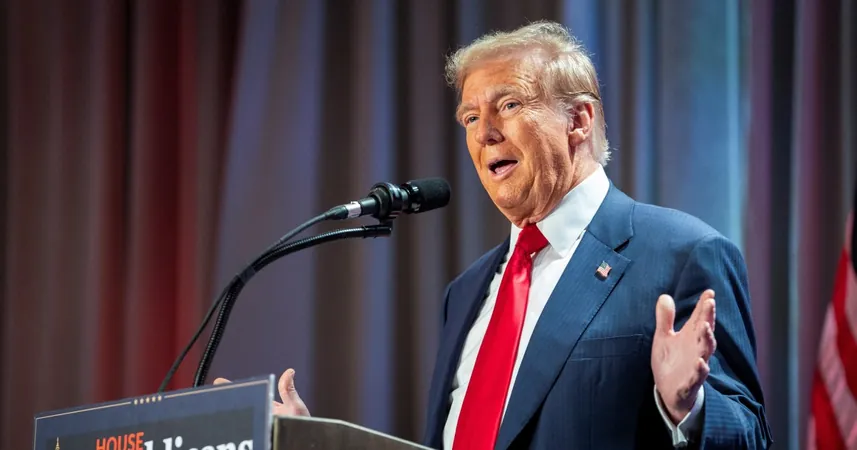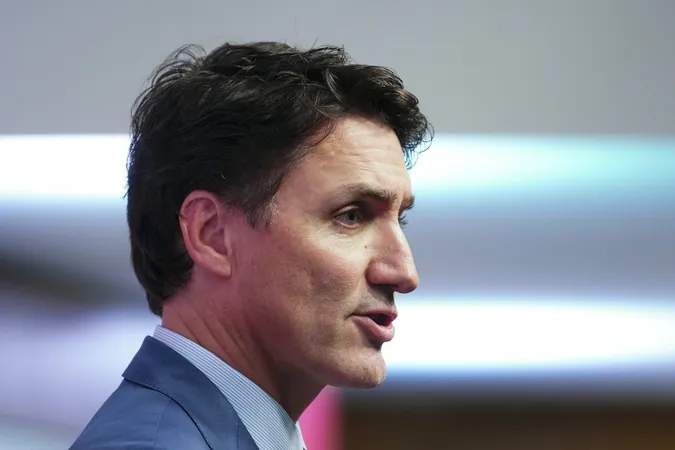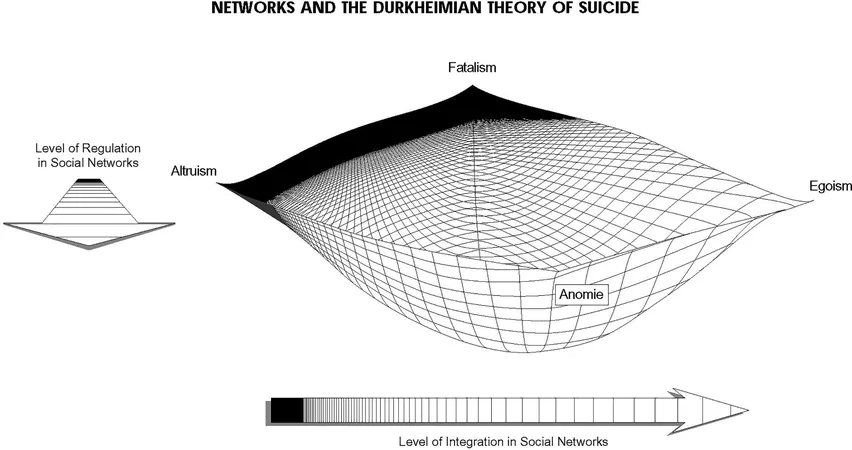
Trump Unveils Bold Tariff Strategy: 25% on Mexico and Canada, 10% on China – What Does It Mean for the Economy?
2024-11-26
Author: Liam
Introduction
In a shocking turn of events, President-elect Donald Trump has announced plans to impose a staggering 25% tariff on all goods imported from Mexico and Canada, coupled with an additional 10% tariff on Chinese products. This bold move is aimed at addressing serious issues like irregular migration and drug trafficking that Trump insists must be resolved urgently.
Details of the Tariff Implementation
On his social media platform Truth Social, Trump proclaimed that these tariffs would go into effect on his first day in office and would continue until both countries take decisive steps to address the so-called 'invasion' of undocumented immigrants and the flow of illegal drugs into the United States. Trump insists that both Mexico and Canada possess the ability to resolve these underlying issues and should 'pay a very big price' for not doing so.
Market Reactions
Market reactions to Trump's announcements have been swift and severe. Currencies across the globe, including the Canadian dollar and the Mexican peso, have seen significant declines against the US dollar. Major stock indices in Asia, particularly Japan's Nikkei 225, experienced notable drops, with a decline of 1.59% reported shortly after the announcement.
Responses from Canada and China
In Canada, Deputy Prime Minister Chrystia Freeland responded by emphasizing the strength of the US-Canada relationship, particularly in trade and border security. She asserted that Canada prioritizes border integrity and highlighted that Canadian imports contribute significantly more to the US economy than imports from China, Japan, France, and the UK combined. Freeland also underlined ongoing cooperation between US and Canadian authorities to combat fentanyl trafficking and stated that Canadian oil plays a crucial role in meeting US energy demands.
Concerns from Provincial Leaders
However, provincial leaders like Ontario Premier Doug Ford have voiced their deep concerns, declaring the proposed tariffs would be 'devastating' to industries and jobs in both countries, calling for a united response.
Chinese Government Reaction
The Chinese government also reacted quickly to Trump's tariff threats, warning that a trade war would have no winners and maintaining that US-China economic cooperation has been beneficial.
Economic Ramifications
Economists and analysts caution that Trump's proposed tariffs could have widespread ramifications for international trade and the economy at large. Higher tariffs could lead to rising costs for American consumers and potentially slow global economic growth. Economists from Natixis have warned that while the dollar may remain strong, the policies could negatively impact countries reliant on exports.
Impact on USMCA
Should these tariffs materialize, they may threaten the US-Mexico-Canada Agreement (USMCA), a trade deal Trump originally championed, which replaced the older NAFTA agreement. Experts suggest that the imposition of such tariffs could effectively dismantle the frameworks that have facilitated North American trade, pulling the region into a complex and potentially damaging trade landscape.
Supporters' Perspective
Trump's supporters argue that these tariffs might re-energize American manufacturing jobs by compelling companies to return production to the US. However, the specter of increased costs for consumer goods looms large, prompting fears of an economic backlash that could ripple across the globe, especially given that Mexico, Canada, and China are among the US's largest trading partners, accounting for a staggering $2.26 trillion in trade in 2022 alone.
Conclusion
As the world watches, the unfolding scenario raises vital questions about the trajectory of US trade policy under the imminent Trump administration. Could these bold moves signal a significant shift in international relations and economic dynamics? Only time will tell how this strategy will play out on the global stage.









 Brasil (PT)
Brasil (PT)
 Canada (EN)
Canada (EN)
 Chile (ES)
Chile (ES)
 España (ES)
España (ES)
 France (FR)
France (FR)
 Hong Kong (EN)
Hong Kong (EN)
 Italia (IT)
Italia (IT)
 日本 (JA)
日本 (JA)
 Magyarország (HU)
Magyarország (HU)
 Norge (NO)
Norge (NO)
 Polska (PL)
Polska (PL)
 Schweiz (DE)
Schweiz (DE)
 Singapore (EN)
Singapore (EN)
 Sverige (SV)
Sverige (SV)
 Suomi (FI)
Suomi (FI)
 Türkiye (TR)
Türkiye (TR)